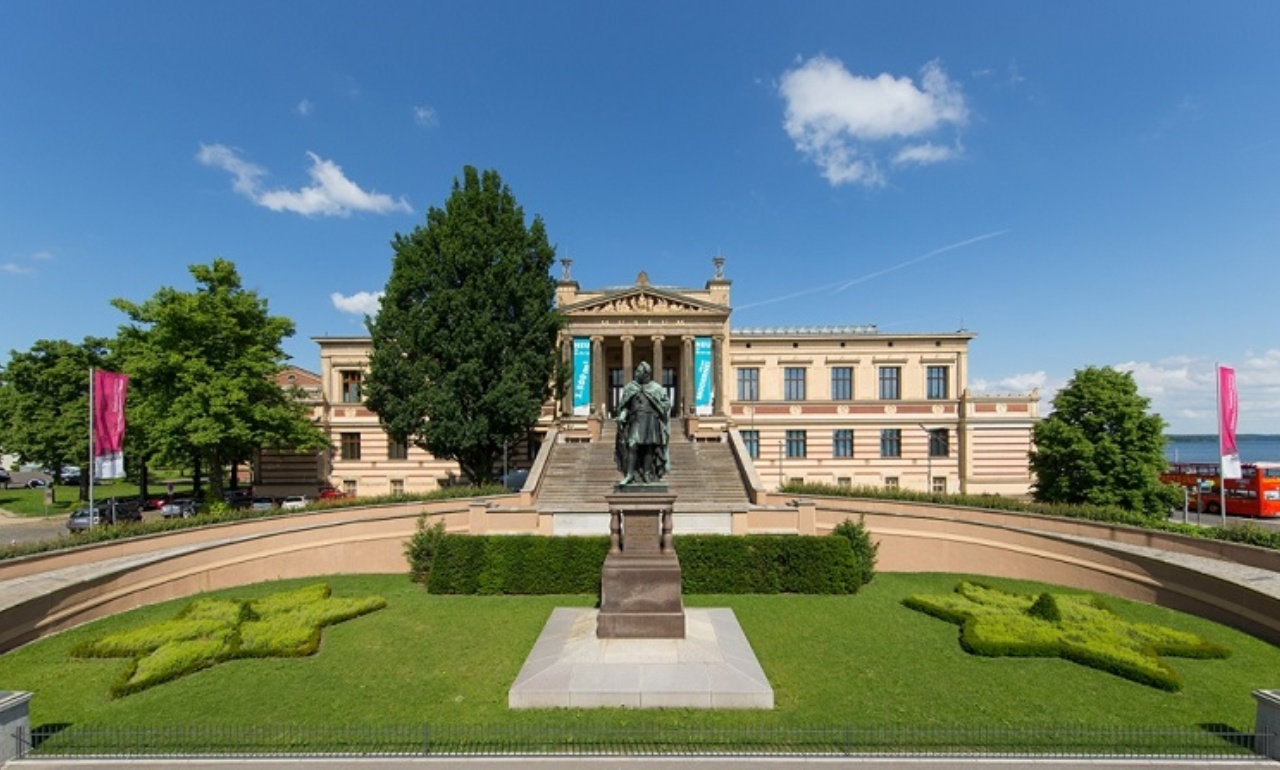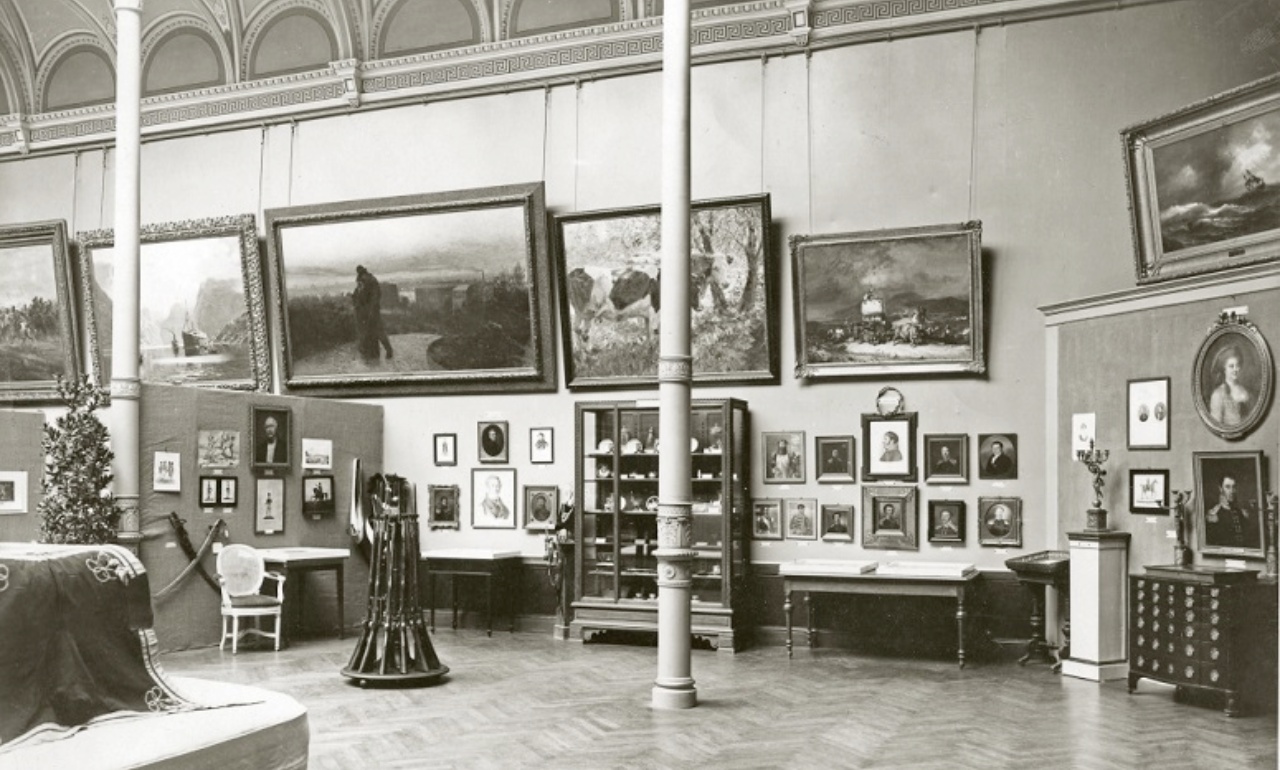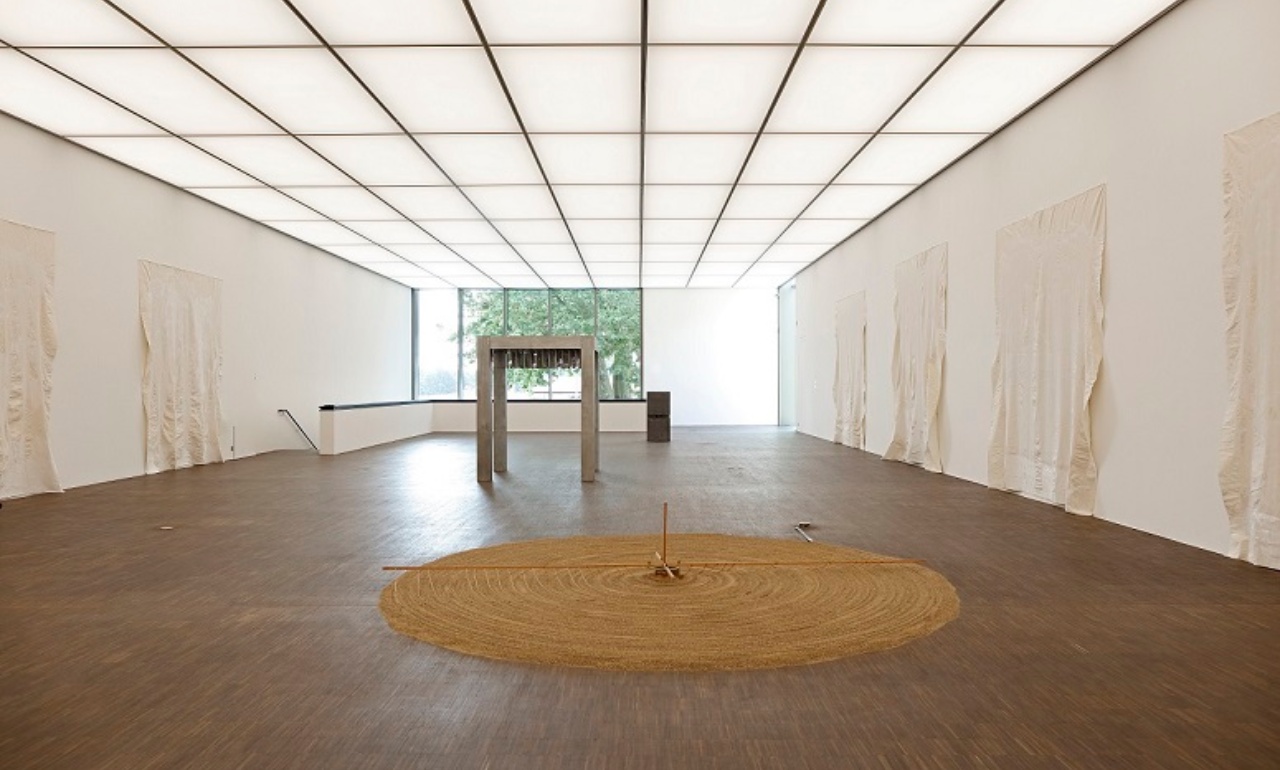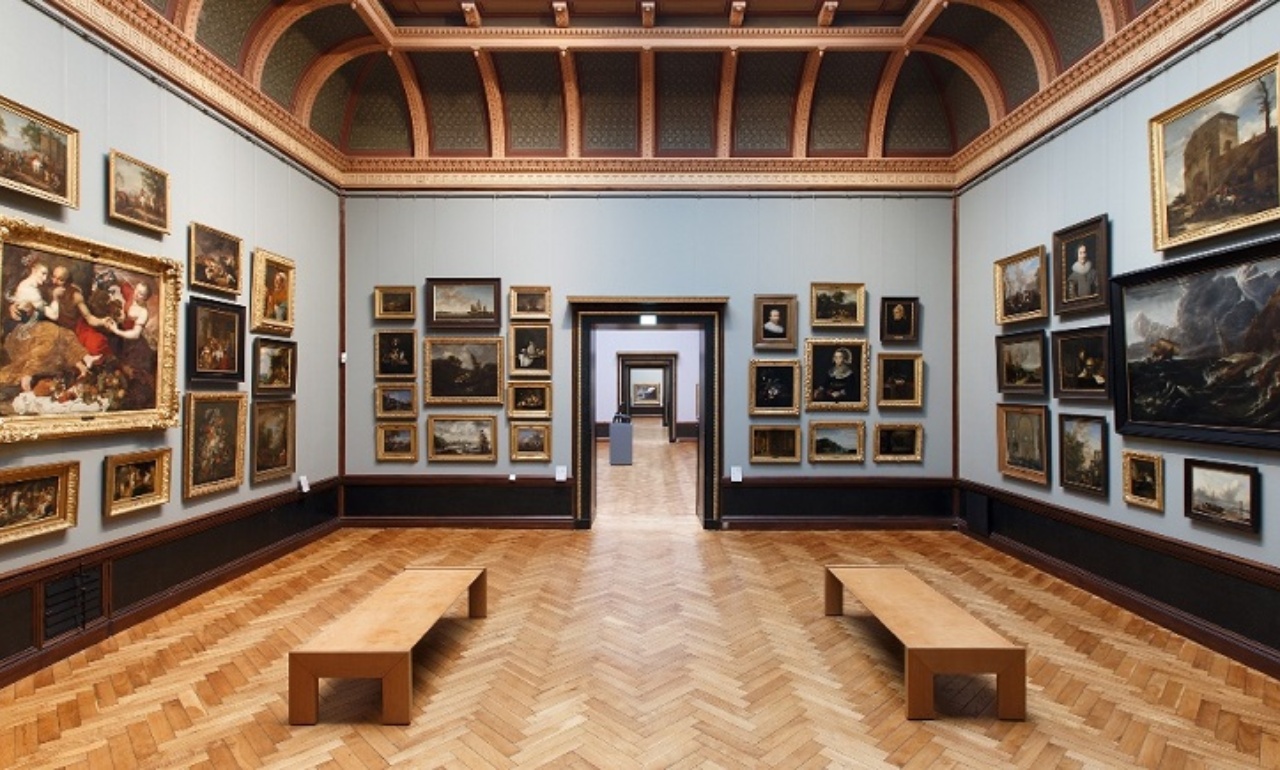Cookies make our services easier. With the use of these services you are accepting that we use cookies.
Gallery of Old & New Masters
History & Architecture
Christian Ludwig II (1638-1756) was more than just a lover of art – he was a collector. He maintained contacts with art dealers and artists from his time and acquired one of the most extensive collections of Dutch and Flemish paintings from the 17th and 18th centuries, as well as works by the French court and hunting scenes painter Jean-Baptiste Oudry. Doing so, he laid the artistic foundations for the collection in the gallery today.
His descendants steadily enlarged the collection. Grand Duke Friedrich Franz I accorded some structure to the abundance of art treasures and appointed the court painter Friedrich Christoph Georg Lenthe (1774-1851) the first Gallery Director. He sought to establish a gallery open to the public, however his efforts proved in vain due to a lack of financial resources.
On 22 October 1882, the museum was opened as a pioneering construction on a technical level, representing the most modern architecture in its day. The master builder Hermann Willebrand (1816-1899), who had already been in charge of the building work on Schwerin palace, was commissioned to prepare the plans for the exhibition building. He applied himself to the specific requirements and functions the building would have to fulfil as a museum, designing a gallery building to the most up-to-date standards: With anti-burglary and fire-protection measures, heating and ventilation, as well as a lighting system in line with exhibition and other display requirements.
Likewise, the aim was for the exterior to also fulfil the aspirations of the art being presented inside it – with Ionian pillars at the front intended to arouse an association with the temples of antiquity, reachable via a large set of steps.
Already by 1901, an extension was required due to the steady expansion in the number of art pieces there, and the wing on the theatre side was constructed.
With the abdication of Grand Duke Friedrich Franz IV in 1918, the ownership of the grand ducal museum was assumed by the state and it became a state museum.
The museum building survived World War II without damage, permitting it to already reopen in 1945. Artworks which had been taken to various locations regarded as safe during the war now returned to Schwerin. With the removal of the historic and folkloric collections in the 1970s, the museum in its Old Garden setting was then used solely for its art collection. Over the following years, the expansion of the collections was advanced with further paintings, works on paper and artisanal objets d’art.
With the opening of the museums’s new building in July 2016, completely new perspectives for presenting the art from the 20th and 21st centuries in Schwerin are now available: On the 1,500 square metres of exhibition space, the Modernist works finally have their own permanent place – with alternating presentations from the stock of works here. A glass walkway connects the new building with the museum’s old one, permitting the visitors to ramble through the history of art from the 17th to the 21st century for the first time.




